How to conduct a job safety analysis (JSA)
Introduction
Everyone wants to feel safe in their workplace. However, this doesn’t happen naturally. And it’s not just the responsibility of one person.
In reality, Work, Health & Safety (WHS) needs to be top of mind for every staff member, contractor, and employer. With a team effort, you can reduce the level of hazards in the workplace to the bare minimum and create a healthy and sustainable work environment.
It all begins with an effective job safety analysis process.
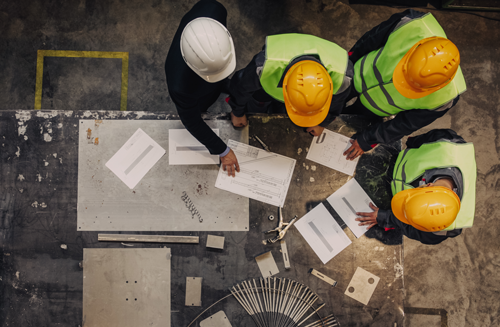
What is a job safety analysis (JSA)?
A job safety analysis (JSA) is that part of the risk management process which aims to identify hazards related to job tasks before incidents occur.
A general safety risk management process focuses on identifying potential hazards and implementing control measures across the entire workplace. However, the purpose of a JSA is to focus on job-specific hazards, addressing them at each step of the job. JSAs, therefore, form an integral part of the general process of risk management.
What is the difference between job safety analysis (JSA) and job hazard analysis (JHA)?
Other than their name, there is no difference between these two terms. A job safety analysis (JSA) is sometimes referred to as a job hazard analysis (JHA) and vice versus, but their objective is the same.

The importance of a JSA
According to Safe Work Australia, in the 19 years between 2003 – 2021, 4,306 workers lost their lives in work-related incidents. So far in 2023, 82* Australians have been killed at work. Some of these resulted from injuries sustained during a work activity (Worker fatality). Others resulted from someone else’s work activity (Bystander fatality).
While many incidents are considered ‘freak accidents’, many could have been avoided.
An effective JSA will help to protect the lives of workers. By eliminating or controlling workplace hazards, you can:
- Prevent and reduce the number and severity of workplace injuries, illnesses, and associated costs
- Promote and improve worker health, wellbeing, and capacity to work
- Foster innovation and improve quality and productivity of work.
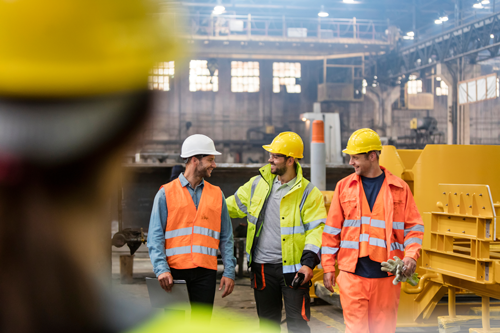
What jobs require a JSA be conducted?
Ideally, every workplace should conduct JSAs. However, the job safety analysis should be made a priority for jobs with:
- A high injury or illness rate
- The potential to cause severe or disabling injuries or illness
- Activities where one simple human error could lead to severe accidents or injuries
- Recent changes in processes and procedures
- New tasks or new machinery
- Tasks performed irregularly
- Tasks requiring written instructions due to complexity
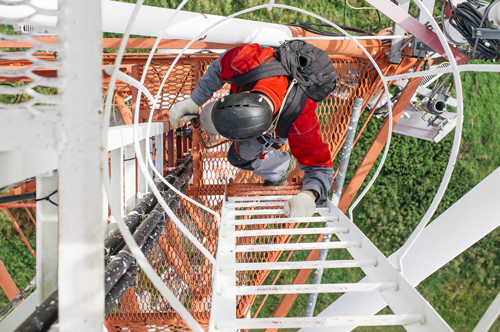
Who should conduct a job safety analysis?
While JSAs are typically seen as the responsibility of employers, foremen, supervisors and WHS advisors, the buck doesn’t stop there.
Current legislation throughout Australia requires that contractors and workers be consulted and participate in the JSA process. In many instances, those closest to the ground have the greatest personal experience and job knowledge and can identify potential hazards much easier. Everyone needs to be aware of industry standards, codes of practice and safety legal requirements in analysing their own jobs and implementing control measures before serious injuries or fatalities occur.
Safety in numbers
Every single person in the workplace has a role to play in hazard management.
Employers, employees, and contractors need to keep their eyes open for potential safety hazards and report them promptly. Senior management then needs to take appropriate action.
Remember – when workers feel safe and valued in their environment, they’re much more productive.
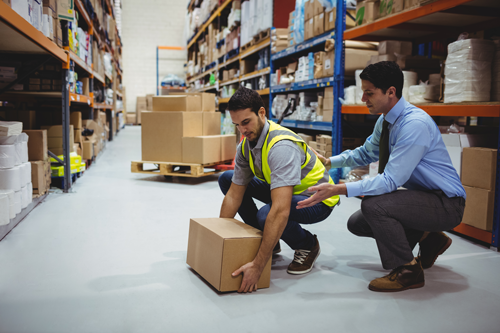
What does an effective job safety analysis (JSA) look like?
The structure and length of a JSA may vary for each organisation and the complexity of the job. Some organisations may include JSAs in their safety risk management system and therefore have prescribed requirements for their JSA process.
An effective JSA process will include these four basic stages (and will invite workers to participate in this process):
- Stage 1 – Job breakdown
- Stage 2 – Hazard identification and risk assessment
- Stage 3 – Determination and implementation of control measures
- Stage 4 – Communication and review
Stage 1 – Break down the job into specific tasks
For a specific job that is the subject of a JSA, first list all the steps required to complete each task. This may sound time-consuming but it is a critical part of understanding the potential hazards associated with a job.
Get experienced workers and/or contractors to review the list and to ensure all job steps have been captured, from beginning to end, and in the right order.

Stage 2 – Identify safety hazards
After reviewing each job task from start to finish, the next step is to write down any existing and potential hazards that arise for each step/task.
Some common workplace safety hazards to look out for:
- Manual handling – Overexertion or repetitive movement can cause muscular strain
- Falls and trip hazards – Falling objects, falls, slips and trips can cause fractures, bruises, lacerations, dislocations, concussion, permanent injuries or death
- Electricity – Exposure to live electrical wires can cause shock, burns or death from electrocution
- Machinery and equipment – Being hit by moving vehicles, or being caught by moving parts of machinery can cause fractures, bruises, lacerations, dislocations, permanent injuries or death
- Hazardous chemicals – Chemicals (such as corrosives, hydrocarbons, heavy metals) and dusts (such as asbestos and silica) can cause respiratory illnesses, cancers or dermatitis
- Extreme temperatures – Heat can cause burns, heat stroke or fatigue. Cold can cause hypothermia or frost bite.
- Noise – Exposure to loud noise can cause permanent hearing damage
- Radiation – Ultra violet, welding arc flashes, micro waves, ionizing radiation and lasers can cause burns, cancer or blindness
- Biological – Micro-organisms can cause hepatitis, legionnaires’ disease, Q fever, HIV/AIDS or allergies
- Psychosocial hazards – Work-related stress, bullying, violence and work-related fatigue can cause mental and physical injuries.
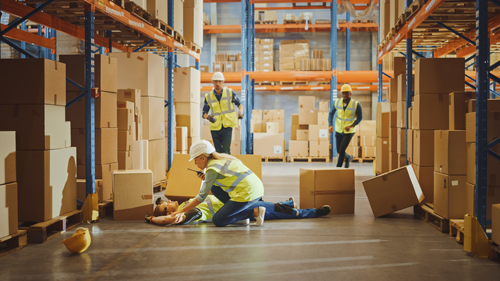
Stage 2 – Conduct a risk assessment
After identifying hazards, determine their potential for harming workers’ physical and psychological health. The most common tool for risk assessment is a risk matrix.
The risk matrix is used together with an assessment of “consequences” and “likelihood” for each hazard.
This is an example of a risk matrix being used to determine a risk-rating for one hazard. To read more about risk assessment, read our blog post – Safety risk management: how to identify and control hazards in the workplace.
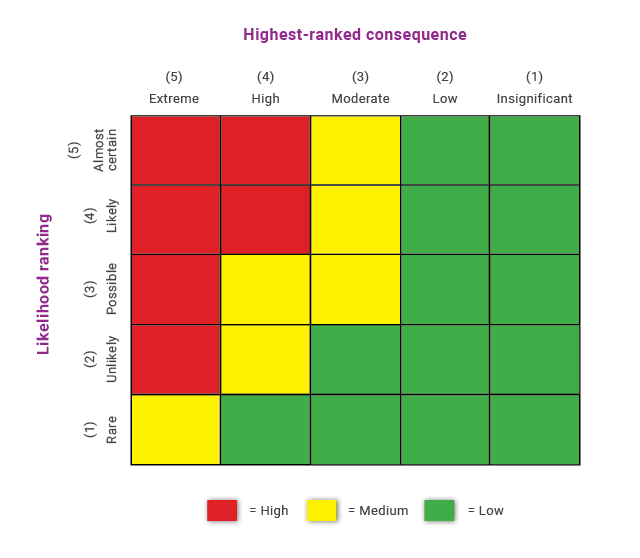
Stage 3 – Develop risk control measures
The next step is to establish risk control measures to prevent injuries or fatalities. Obtaining an overall safety risk rating for each hazard helps prioritise a course of protective action.
When determining preventive measures to control risks, use of the Hierarchy of Controls is mandatory throughout Australia. The hierarchy of controls ranks the preventive measures from most effective to least effective.
Ideally, hazards should be eliminated completely. However, in situations where it’s not practical to do so, work through the other levels in the hierarchy to find the best alternative.
There are six levels in the hierarchy of controls:
- Eliminate – Remove the cause of danger completely
- Substitute – Replace the hazardous work processes or machinery with a safer alternative
- Isolate – Separate the hazard from the people at risk of injury
- Engineering controls – Make physical changes, such as redesigning machinery to insert safeguards such as guarding
- Administrative controls – Install signs, rotate jobs or develop job procedures
- Personal protective equipment – Provide gloves, aprons, hearing protection, etc
For examples showing how to apply the Hierarchy of Controls, download our eBook.
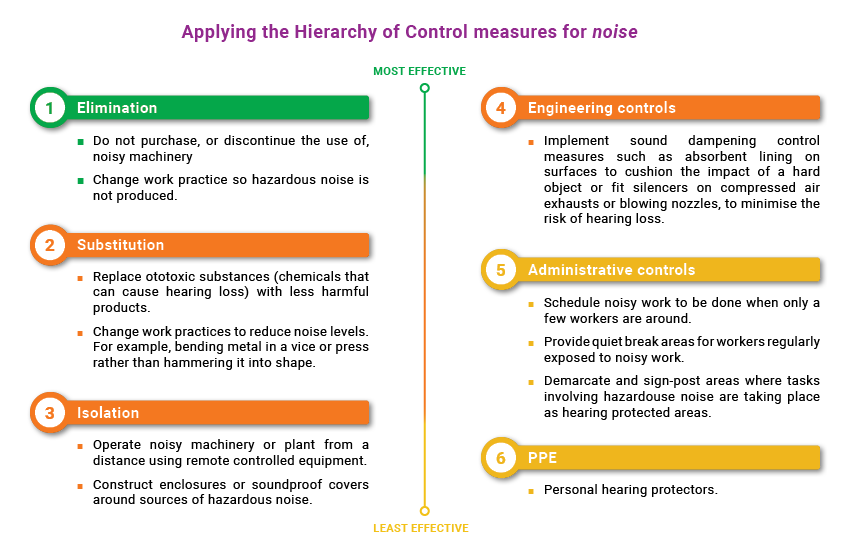
Stage 4 – Implement and review the JSA
Once the JSA is complete and the control measures developed, communicate the proposed changes to the relevant parties. Have them review the JSA to ensure all existing and potential hazards relating to each particular task have been managed, and the control measures are practical and likely to be effective.
Implement the new control measures and review their effectiveness as soon as possible after implementation. Ensure no new hazards are introduced along with the new control measures.
After implementation is complete, conduct regular audits and safety inspections to ensure the control measures are effective. Ask workers to continue to report any near misses, incidents or concerns.
If there are any changes to working conditions or equipment, the JSA may need to be revised. Make sure any updated JSAs or control measures are communicated to the relevant parties.
Educate with the JSA
Use the JSA to train workers and contractors about the hazards associated with specific jobs and the working environment. Make sure relevant workers and contractors are trained in the control measures before commencing the job. Use this opportunity to review the effectiveness of control measures and the condition and use of personal protective equipment.
Facilitating communication, engagement and participation with workers, supervisors, senior managers and contractors helps integrate accepted safety work practices across the entire organisation.
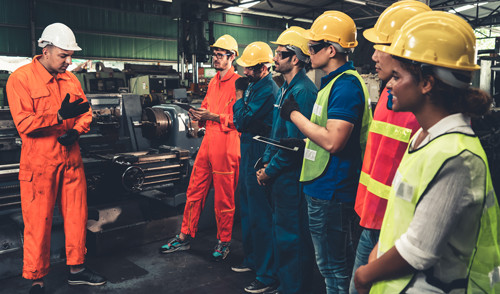
How does a job safety analysis (JSA) differ from a safe work method statement (SWMS)?
The main difference is in their application. A job safety analysis (JSA) is used to identify and manage job-specific hazards for lower-risk work activities. A safe work method statement (SWMS), on the other hand, is used for high risk work activities. They can, however, both use the same process to achieve risk-control.
A SWMS is required by law for high risk construction work, and that work must subsequently be carried our in accordance with the SWMS. While there is not formal requirement in legislation to complete a JSA, there is a legal requirement to minimise safety risks and the JSA process can be an effective way to achieve that.
Safe Work Australia stipulates 18 high construction work activities defined in WHS Regulations, including:
- work involving a risk of a person falling more than 2 metres
- work involving, or likely to involve, the disturbances of asbestos
- work carried out in an area in which there is movement of powered mobile plant
- work carried out in or near water or other liquid that involves a risk of drowning.
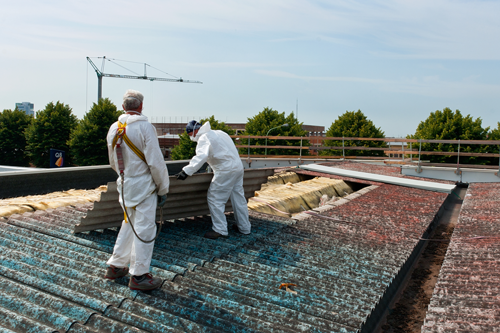
Download our free eBook – Applying the Hierarchy of Control measures to manage workplace hazards
*The 2023 figures are still preliminary and numbers will be updated upward when more information about some workplace fatalities becomes available.